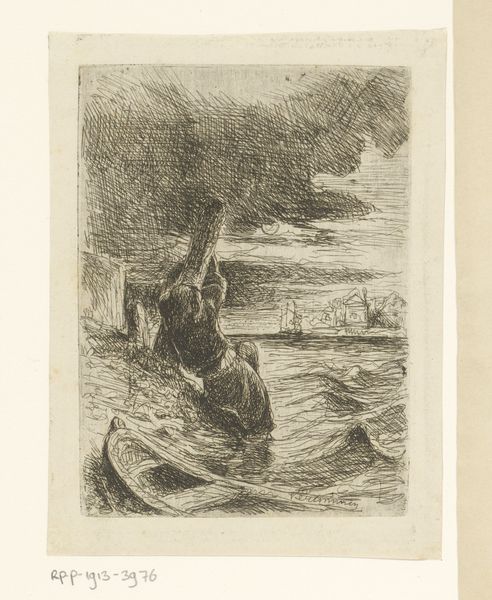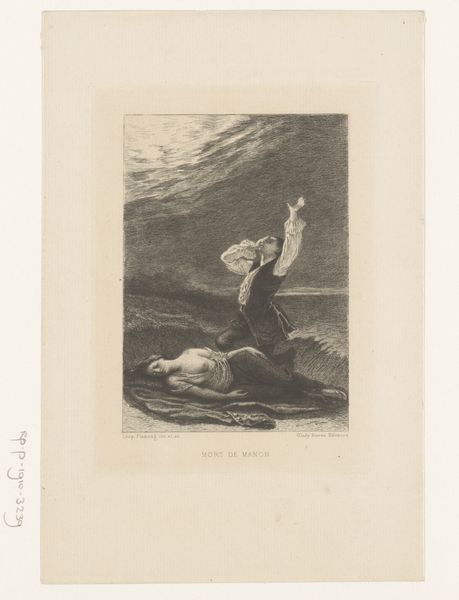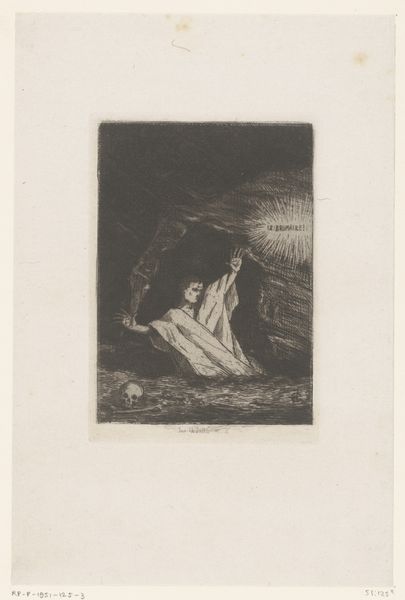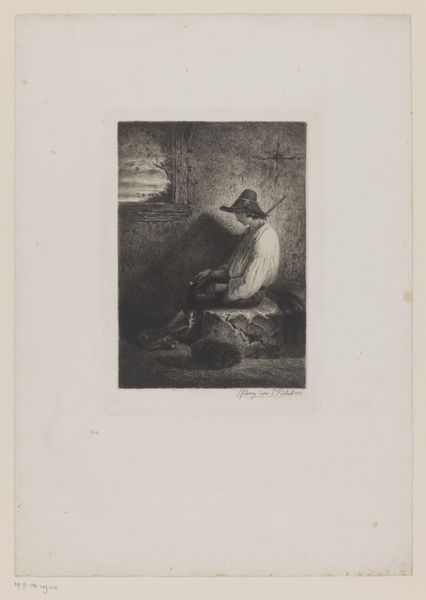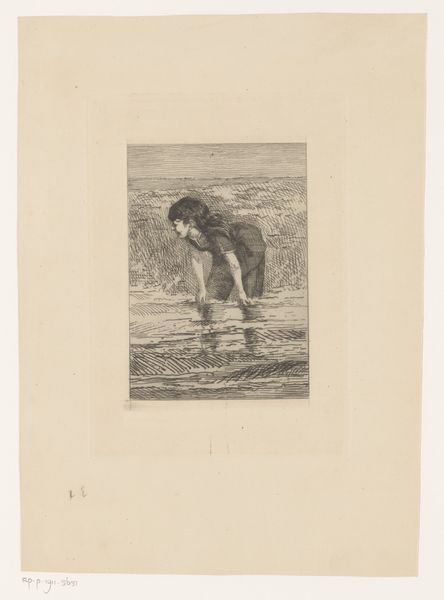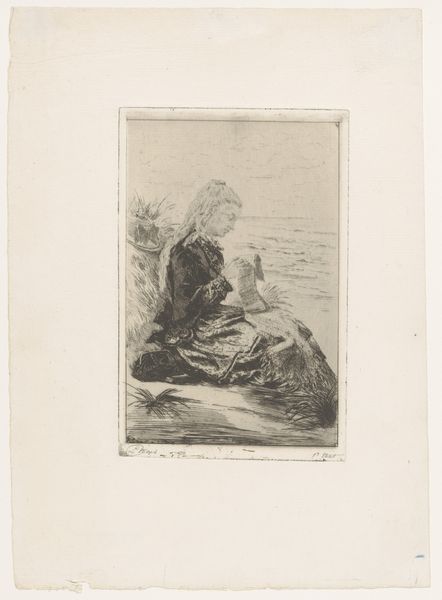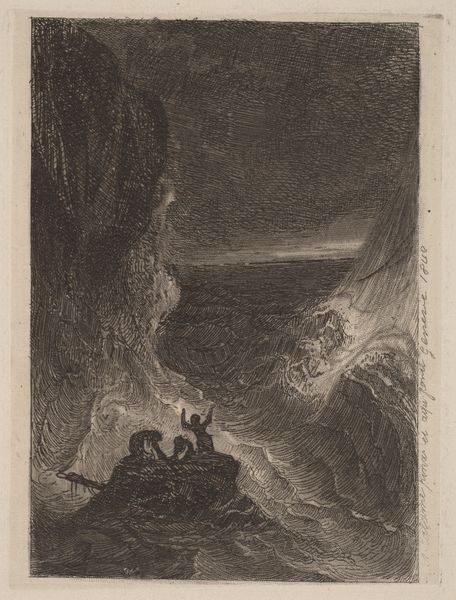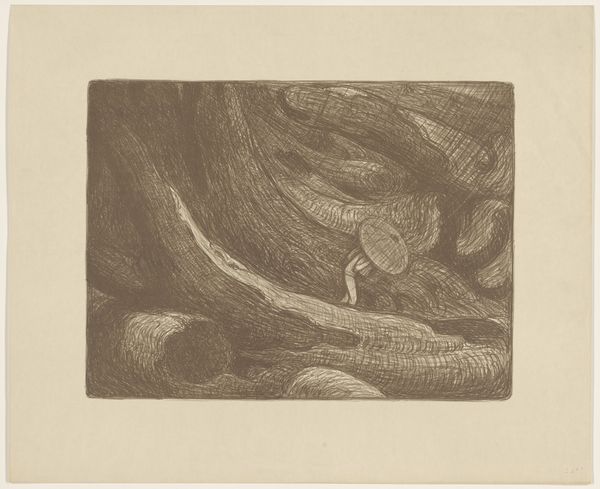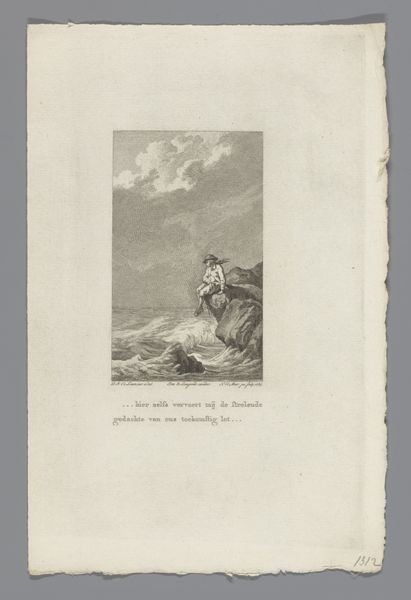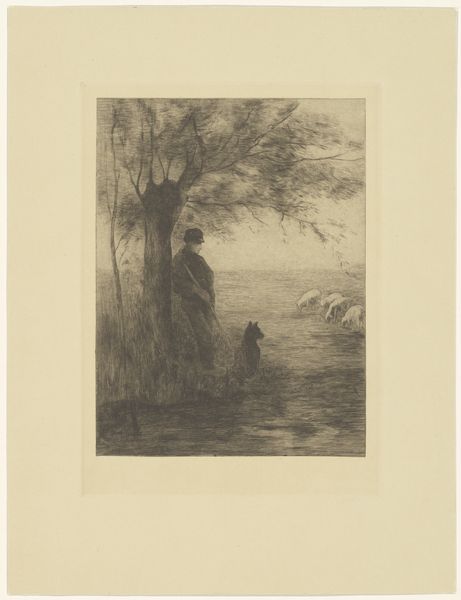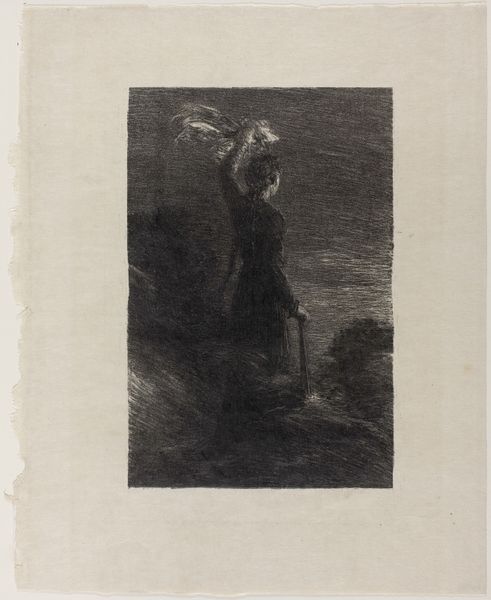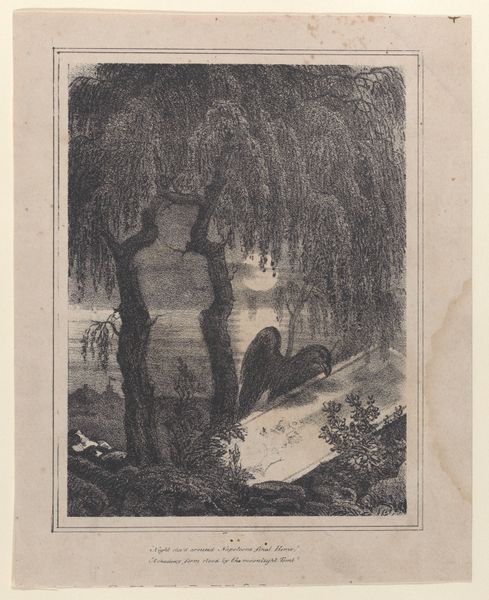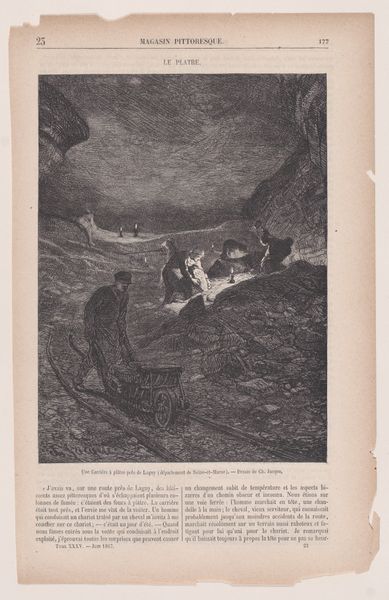
Schipbreukeling houdt zichzelf vast aan een paal langs de oever 1825 - 1863
0:00
0:00
print, etching
#
narrative-art
# print
#
etching
#
landscape
#
figuration
#
romanticism
#
monochrome
Dimensions: height 128 mm, width 92 mm
Copyright: Rijks Museum: Open Domain
Editor: So, this print is called *Shipwrecked Man Holding onto a Pole along the Shore*, dating sometime between 1825 and 1863, by Guillaume Joseph Vertommen. It's a very evocative etching. The stormy sky and the lone figure really create a sense of isolation. What do you see in this piece? Curator: The immediate power, for me, resides in the figure’s desperate grip on the pole, doesn't it? It’s more than just physical survival; it's clinging to hope, a fragile link to the known world against the chaos of the sea. Notice the artist's strategic use of light. Do you see the pale moonlight piercing through the tempestuous clouds, illuminating not the man's face, but the distant shore? Editor: Yes, that is a stark contrast. The land seems so far, an unreachable promise. Curator: Exactly. Vertommen plays with the symbolism of light and dark. The bright shore could represent safety, but also the unknown. What awaits him if he makes it? The dark clouds hanging over his head represent current struggles, fear of death. It taps into archetypal fears, doesn’t it? Consider the period - Romanticism. This print really embodies the movement’s fascination with sublime, the awesome and terrifying power of nature. Editor: I see what you mean about the Romantic ideal. I didn't pick up on the cultural significance behind the light at first, but knowing this definitely provides a fresh lens. Curator: Visual symbols are deeply rooted in shared human experiences. Next time you approach art, see what feelings arise that may trigger such historical and cultural significance. Editor: This has really made me think about how art speaks to our deepest anxieties and hopes across time. Thank you.
Comments
No comments
Be the first to comment and join the conversation on the ultimate creative platform.
